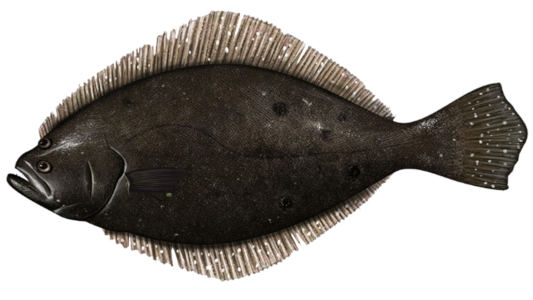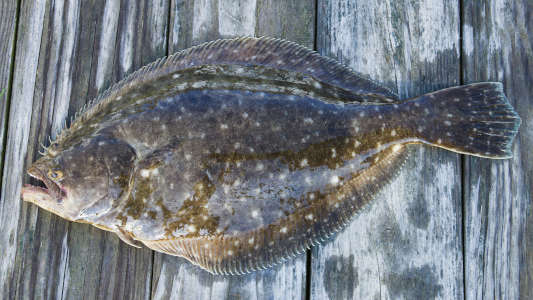Summer Flounder (Paralichthys dentatus)


Summer Flounder is a saltwater species of fish of the genus Paralichthys (Large-tooth flounders or sand flounders). Paralichthys meaning parallel fish, not clear exactly why the name was chosen. Dentatus meaning toothed, is a reference to the large canine teeth. The summer flounder can be confused with the southern flounder and the gulf flounder.
Where to Find Summer Flounder
The range of summer flounder is roughly from Nova Scotia to Florida. The bulk of the population resides in the middle atlantic bight, from North Carolina to Massachusettes. They can be found from the water's edge in estuaries to all the way out on the continental shelf.
Being a flatfish, their body is designed to lay on the seafloor and where they spend most of their time. Occasionally summer flounder will be near the surface actively eating bait, but this is usually in shallow water near the waters edge anyway.
Other Names for Summer Flounder
Other names people have used to refer to this fish include fluke, flounder, and northern flounder.
When to Fish for Summer Flounder
For the shore based angler, you will have a chance at some size of summer flounder spring through fall. For the boat based angler you can extend your fishing windows into the colder months, with some locales having fish available through the winter. For most anglers, however, the primary fishery is roughly from May through September.
Summer flounder have strong seasonal inshore-offshore movements. Typically they will be in shallow coastal waters during the warm months and move offshore for the fall and winter.
What Tackle to Use for Summer Flounder
Flounder are typically caught on bait or lures moved near the bottom. Hook size varies widely depending on the size of fish you want to target.